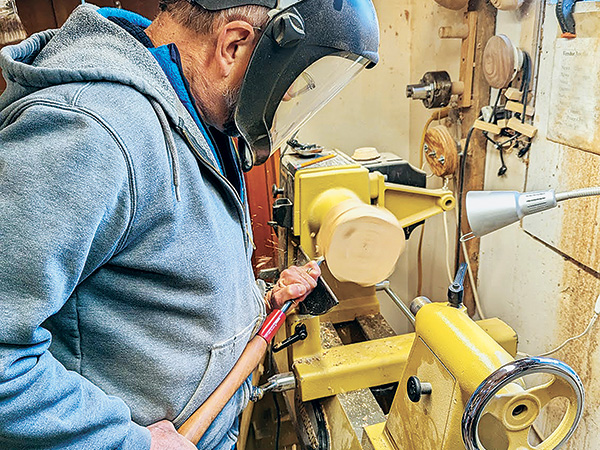
When I was first starting out as a turner, my goal was to turn, sand and finish a reasonably good bowl-shaped object in four hours or less. I don’t know why this seemed to be a good idea, as I wasn’t going to be able to earn anything close to minimum wage no matter how quickly I turned.
I lived by the motto, “From firewood to firewood.” This was helpful at first. I didn’t worry about perfection as it wasn’t going to happen anyway. I turned a lot of “roadkill” blanks, and when things went sideways with one of them … well, no big deal, it started out as firewood anyway, so into the burn pile it went. Turn and burn, man!
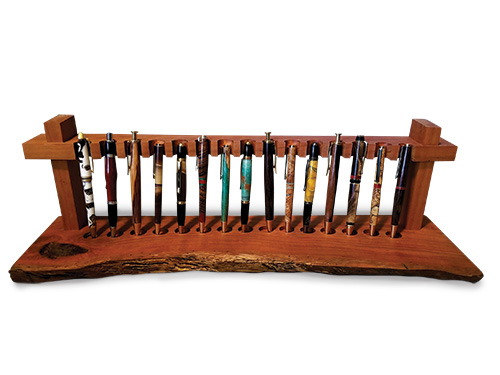
The one good thing that came out of this approach was a willingness to discard any piece that wasn’t as good as I could make it. I sign all my work, even in the early days, and I don’t want someone someday to pick up a crap bowl and see my name on it. Around about bowl #50, I had a bit of an epiphany. I wasn’t really mastering the craft but relying on a mix of skill and luck to produce a signable piece. I realized I needed to commit to a bowl, start to finish, if I wanted to become a better turner. Once I mounted a blank on the lathe, I had to learn how to deal with whatever was thrown at me. The time it took to complete a bowl wasn’t important, only the end result. It helped that I had a day job!
If the blank I cut had unbalanced grain, I dealt with it. I made a three-pin driver with two adjustable pins so that I could orient and tilt the poorly cut blank on the lathe to balance the grain. I figured out how to do interrupted cuts to true up the wobbly off-axis blank. And the next time I cut a blank, I made sure the grain was as symmetrical as it could be before it went on the lathe.
Lessons in Patience
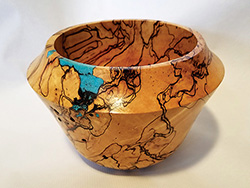 |
 |
I learned how to adjust the design of the bowl on the fly to compensate for “design opportunities” presented by bad wood and catches. I learned how to inlay splits and voids that emerged. If a bowl warped as it dried, I learned how to remount and re-turn it back into symmetry. Some bowls needed to be re-turned twice because I didn’t let them fully dry, so I learned patience.
Annular marks caused by over-pressuring the heel of the gouge were a problem — and always in the inside of a bowl. I learned to grind the heel down to minimize these marks, and I learned to float rather than pressure the bevel of the gouge.
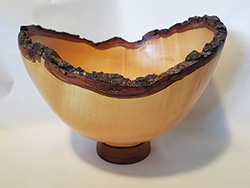 |
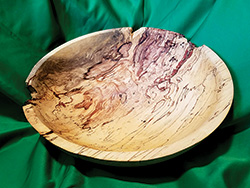 |
For some reason, I like to turn spalted wood. Some spalted blanks were more “mulchy” than others — turning them required liberal use of a hardening oil or even a mix of hardening oil and varnish to stabilize them before the final turning and sanding.
 |
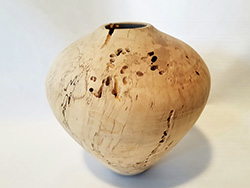 |
Torn grain happens, and sometimes you just have to resort to an “80-grit gouge” to get rid of it. I learned to sand to 120-grit, flood the bowl with tung oil (or linseed), let it harden and then sand back with 80-grit almost to bare wood. This cuts through any turning glaze, reduces, if not eliminates, torn grain and fills in pores in the wood. Then I apply a light coating of tung oil, give it a day to harden, do a final sanding with 120-, 180-, 260- and maybe 320-grit and apply the final coat of finish.
I’m still not very fast. But my percentage of signables is way up there, and I’m fast enough to at least earn minimum wage, so I’m happy.






